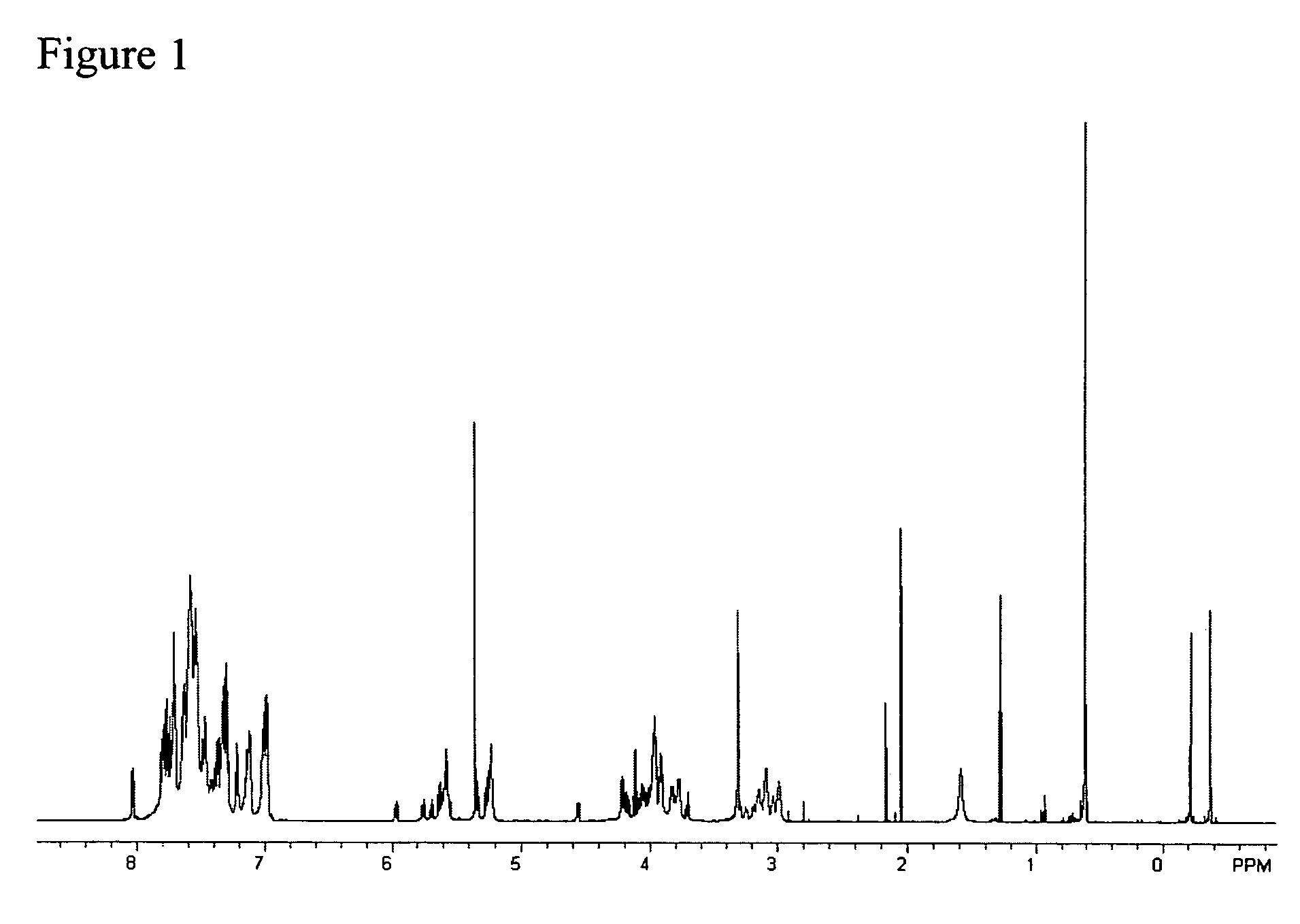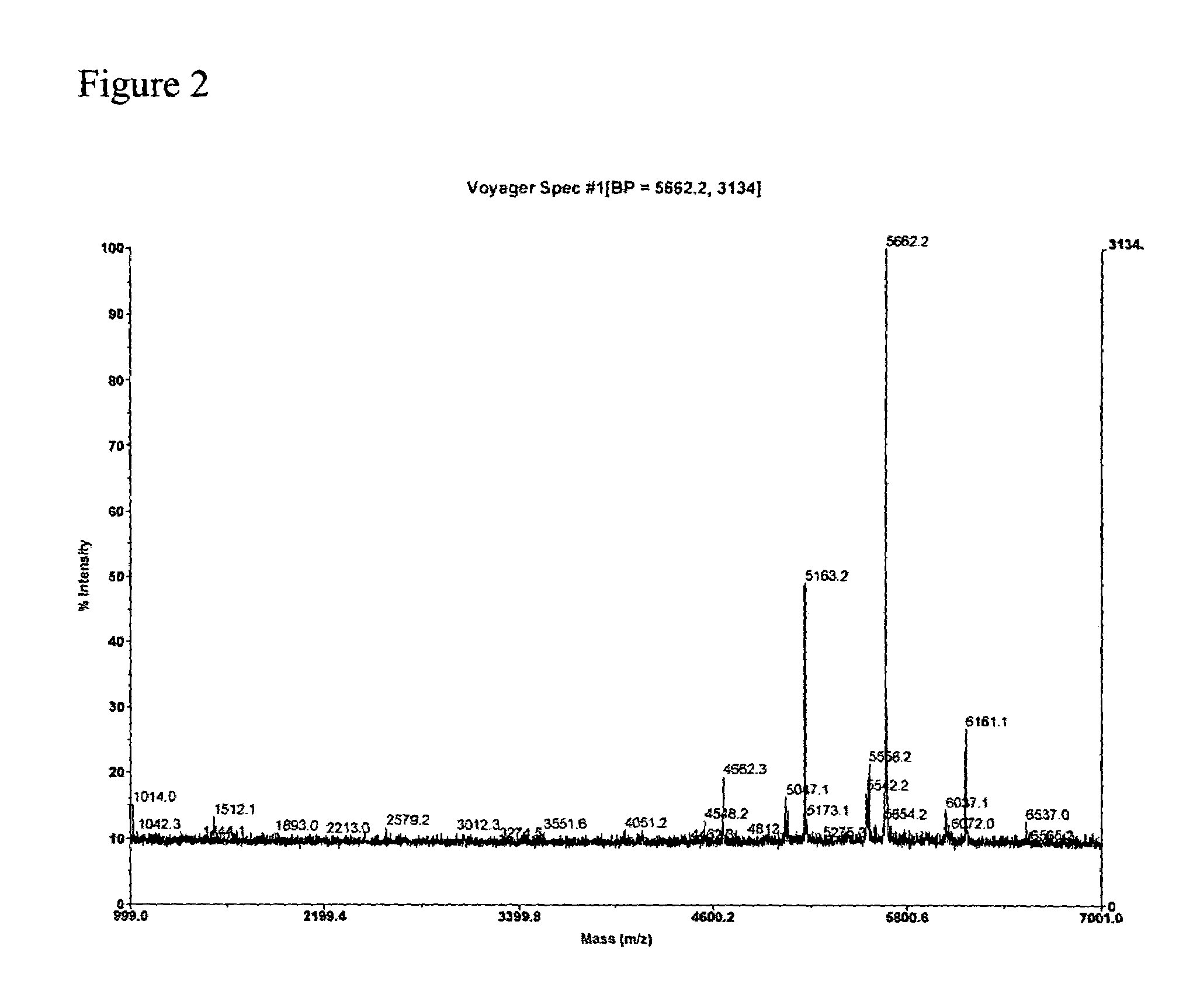Chemical synthesis of low molecular weight polyglucosamines and polygalactosamines
a low molecular weight, polygalactosamine technology, applied in the direction of application, lactose production, sugar derivates, etc., can solve the problems of limited application, limited commercial scale preparation of low molecular weight polyglucosamines derived from chitosan, and inability to meet the requirements of low molecular weight polyglucosamines,
- Summary
- Abstract
- Description
- Claims
- Application Information
AI Technical Summary
Benefits of technology
Problems solved by technology
Method used
Image
Examples
example 1
Synthesis of 2-deoxy-1,3,4,6-tetra-O-acetyl-2-phthalimido-D-glucopyranose
[0088]
[0089]D-Glucosamine hydrochloride (compound 1, 1.0 Kg) was suspended in methanol (5.0 L) and vigorously stirred. NaOH (184.8 g) was dissolved in minimum deionized water and added to the D-Glucosamine / Methanol suspension. The suspension was stirred for 15 min and the insoluble material (sodium chloride) was filtered off by vacuum filtration. The theoretical amount of NaCl formed should be about 270 g.
[0090]To the filtrate, phthalic anhydride (342 g) was added and the solution was stirred until most of the solid dissolved (about 30 min). This was then followed by the addition of triethylamine (468 g) and stirred for 10 to 15 min. To the resulting clear solution, another portion of phthalic anhydride (342 g) was added and the mixture was allowed to stir overnight at room temperature. Product usually began to precipitate out after two hours.
[0091]The precipitated product was filtered and the residue was washe...
example 2
Synthesis of Monomer (I)
[0093]
[0094]Product 3 (464 g) was dissolved in toluene and the solvent was evaporated. This was repeated and the remaining solid was placed on a high vacuum line overnight.
[0095]The dried solid was dissolved in minimum methylenechloride (ca. 600 ml), and stirred well. To this, 4-methylbenzenethiol (181 g, 1.45 mol, 1.5 eq.) was added followed by the dropwise addition of boron trifluoride diethyl etherate (BF3-etherate; 165 g, 1, 16 mol, 1.2 equivalent, over 180 min). The reaction mixture was stirred overnight. White crystals formed in the morning when stirring was stopped. The crystals were filtered, giving product 4A. The filtrate was diluted with methylenechloride, washed sequentially with saturated NaHCO3 solution, water, then bicarbonate solution, and dried giving product 4B. Both 4A and 4B products were extensively washed with anhydrous methanol and dried under vacuum. Since the NMR spectrums of 4A and 4B products were identical, these two were combined ...
example 3
Synthesis of Monomer (II)
[0106]
[0107]To ensure that the starting glycoside was free of EtOH traces, compound 3 (60.0 g; 126 mmol) was dissolved in toluene and evaporated. It was then dissolved in anhydrous CH2Cl2 (500 ml) containing MeOH (6.5 g; 202 mmol; 1.6 eq.). Tin tetrachloride (SnCl4; 18.4 g; 70.5 mmol; 0.56 eq.) was diluted with CH2Cl2 (25 ml) and added drop-wise. The reaction mixture was poured over ice water and shaken well. This was repeated once more and then the organic layer was washed twice with aqueous saturated NaHCO3, dried with MgSO4, filtered, and concentrated. The crude product was recrystallized from hot EtOH, giving crystals of product 7(43.1 g). The crude yield of 49.8 g of product 7 was 88% of the theoretical yield, calculated to be 56.6 g, while the recrystallized product 7 yield of 43.1 g was 76%.
[0108]1H-NMR (CD2Cl2) δ: 7.86-7.74 (phthalimido hydrogens), 5.78 (H-3), 5.31 (H-1), 5.18 (H-4), 4.31 (H-2), 4.34 & 4.20 (H-6), 3.88 (H-5), 2.20, 2.03, 1.86 (methyl...
PUM
| Property | Measurement | Unit |
|---|---|---|
| temperature | aaaaa | aaaaa |
| temperature | aaaaa | aaaaa |
| temperature | aaaaa | aaaaa |
Abstract
Description
Claims
Application Information
 Login to View More
Login to View More - R&D
- Intellectual Property
- Life Sciences
- Materials
- Tech Scout
- Unparalleled Data Quality
- Higher Quality Content
- 60% Fewer Hallucinations
Browse by: Latest US Patents, China's latest patents, Technical Efficacy Thesaurus, Application Domain, Technology Topic, Popular Technical Reports.
© 2025 PatSnap. All rights reserved.Legal|Privacy policy|Modern Slavery Act Transparency Statement|Sitemap|About US| Contact US: help@patsnap.com



